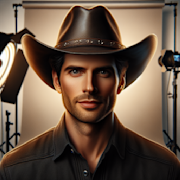The Cinematic Evolution of Makeup: Transformative Techniques in Classic Films

Makeup has played a pivotal role in the world of cinema since the early days of film. From creating otherworldly creatures to enhancing the natural beauty of actors, makeup artists have continuously pushed the boundaries of their craft to bring characters to life on the big screen. In this blog post, we will explore the transformative techniques used in classic films that have helped shape the way we view makeup in cinema today.
The Birth of Makeup in Film
The art of makeup in film can be traced back to the early days of silent cinema. One of the pioneers of film makeup was Max Factor, who revolutionized the industry by creating a foundation specifically designed for use on screen. Factor’s contributions to the world of makeup in film laid the foundation for future artists to experiment and innovate with their craft.
In the 1925 film The Phantom of the Opera, actor Lon Chaney famously transformed into the disfigured Phantom using a combination of makeup and prosthetics. This iconic performance set the stage for future filmmakers to explore the possibilities of makeup in creating memorable characters.
Technological Advancements in Makeup Techniques
As cinema evolved, so did the techniques used in makeup. The 1940s saw the emergence of Technicolor film, which presented new challenges and opportunities for makeup artists. With the introduction of color film, makeup artists had to adapt their techniques to ensure that actors’ makeup looked natural and vibrant on screen.
One of the most famous examples of Technicolor makeup in classic film is the 1939 movie The Wizard of Oz. Makeup artist Jack Dawn used a combination of traditional and experimental techniques to bring the colorful characters of Oz to life. From the green skin of the Wicked Witch to the ruby red lips of Dorothy, Dawn’s work set a new standard for makeup in Technicolor film.
Makeup as a Character Development Tool
In classic films, makeup has often been used as a tool for character development. Whether it’s aging a character over the course of a film or transforming them into a fantastical creature, makeup can help actors fully embody their roles on screen.
One notable example of makeup as a character development tool is the 1982 film Blade Runner. Makeup artist Marvin Westmore used prosthetics and aging techniques to transform actor Rutger Hauer into the replicant Roy Batty. The subtle but effective makeup allowed Hauer to fully inhabit the complex and emotionally charged character, adding depth and authenticity to his performance.
Makeup in Fantasy and Science Fiction Films
Fantasy and science fiction films have long been a playground for makeup artists to showcase their creativity and skill. From creatures of myth and legend to extraterrestrial beings, makeup has been instrumental in bringing fantastical worlds to life on screen.
The 1968 film Planet of the Apes is a prime example of the transformative power of makeup in science fiction. Makeup artist John Chambers utilized innovative prosthetics and techniques to create lifelike ape characters that captivated audiences and set a new standard for makeup in film. The success of Planet of the Apes paved the way for future filmmakers to explore the possibilities of makeup in creating immersive and imaginative worlds.
The Legacy of Makeup in Classic Films
The transformative techniques used in classic films have had a lasting impact on the world of cinema. From the pioneering work of Max Factor to the groundbreaking creations of makeup artists like Jack Dawn and John Chambers, makeup has become an essential tool for filmmakers to bring their visions to life on screen.
As technology continues to advance and storytelling evolves, makeup artists will no doubt continue to push the boundaries of their craft in creating unforgettable characters and immersive worlds. The legacy of makeup in classic films serves as a testament to the enduring power of creativity and ingenuity in the world of cinema.
In conclusion, the cinematic evolution of makeup in classic films showcases the transformative potential of this art form in bringing characters and worlds to life on the big screen. From the early days of silent cinema to the present day, makeup artists have continuously pushed the boundaries of their craft to create memorable and iconic characters that have captivated audiences for generations. As we look to the future of film, we can only imagine the innovative and imaginative makeup techniques that lie ahead, waiting to mesmerize and inspire audiences around the world.

Alberto Miller
Movie Fanatic
More From Classics Authority Movies

Movie
Classic Horror Movies That Still Haunt Our Dreams

Movie
Who's Afraid of Virginia Woolf? (1966)

Movie
The Artist (I) (2011)

Movie
Alfred Hitchcocks Leading Ladies: Women Who Defined Classic Suspense

Movie
The Sting (1973)

Movie
Inception (2010)





